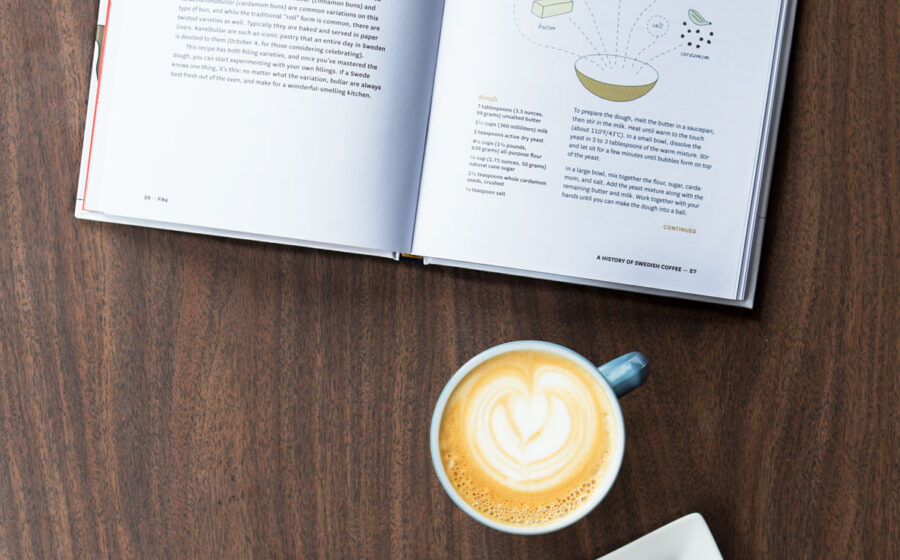[W]hat is fika? By definition it is coffee with a snack, usually something sweet or a savory lunch item. But it’s also so much more.
Coffee has a rich history in Sweden, where it is enjoyed throughout the day, wrapped up in social customs and complementary to the country’s culinary tradition. Fika (pronounced fee-ka) is the pause that maintains that history, a coffee-fueled siesta among coworkers and friends. It’s a social, energizing, meditative, moderately indulgent, and culturally revered pastime that is reflected in other coffee cultures around the world—including the wider specialty coffee culture. But—and this might be a craving for saffron cake talking—the Swedes do it best.
Kindvall’s endearing illustrations and Kindvall and Brones’s detailed recipes make up a book of Swedish tradition that is hard not to fall in love with.
At least, that’s the argument within the charming new book Fika: The Art of the Swedish Coffee Break, released by Ten Speed Press in April. Writer Anna Brones and illustrator Johanna Kindvall put together a useful introduction to fika, complete with chapters of traditional recipes, and the reception of their work has been impressive. By leaking the tradition of fika, they’ve allowed many who might have otherwise labeled coffee and pastries a guilty pleasure to partake in a cultural rite of slowing down and enjoying oneself. “I just think that everyone should experience the smell of freshly baked cardamom buns in their kitchen at least once in their lives,” writes Brones in an e-mail.
Kindvall’s endearing illustrations and Kindvall and Brones’s detailed recipes, accessible to both beginners and more advanced bakers, make up a book of Swedish tradition that is hard not to fall in love with. From elegantly braided vetebullar (cinnamon and cardamom buns) to smörgås stacked with herring and gravlax, they present fika as a quaint, mouthwatering, and heartwarming pastime. Which it is.
“Life without fika is unthinkable,” the authors, both of Swedish descent, write.

In Sweden, fika breaks are written into employment contracts, tie into holidays and festivities, and act as social glue. Fika is the casual meet-up, a great way to make new friends and keep in touch with old ones.
That coffee is so important in Swedish culture isn’t surprising. Swedes drink more coffee per person than almost any other nationality. Along with neighboring countries, the region outstrips (in cups per day) all other parts of the world. Coffee’s role in Nordic language says a lot about its consumption: The word fika originates from an early Swedish variant of coffee—kaffi—which at some point had its syllables switched. In a lovely example of language outdoing itself, that word evolved beyond noun into state-of-being. In Sweden one might fikapaus (take a break to have fika), head to the fikarum (a resting spot intended for fika), and enjoy their fikastund (the moment of fika)—you get the idea.
The book emphasizes the ideal of homemade, with traditional recipes integrating organic ingredients and minimal gadgetry. That fits well with the spirit of specialty coffee. In fact, fika-style cafés have been popping up around the world for some time, in cities like New York, London, and Paris. “I think the nature of fika fits really well with specialty coffee culture; it’s sort of an overall commitment to ‘slow life,’” writes Brones. “You take time to source good coffee and brew it, and in turn you want to make time to enjoy it.”
Fika the book is a passport to an important aspect of coffee consumption, one that can get lost along the way when so much emphasis is placed on coffee’s technical sides—the roasting and brewing processes, and even coffee cultivation. While these attributes are important to remember and dedicate heart to, it would be a shame to forget that coffee can also be about enjoying oneself and letting go. Cinnamon rolls help remind us.
—Regan Crisp is Fresh Cup’s Associate Editor.









